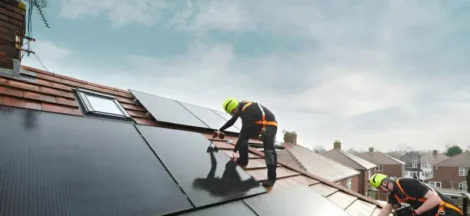We all know that glass is an essential material used for creating windows, kitchen splashbacks, bathroom mirrors, drink bottles, food jars, windscreens, plates, and countless other products that we either see or use every day. Some of us are also aware that glass is a vital component in today’s technologies, such as fibre optics, high-powered telescopes, notebooks, smartphones, and computers.
But what most of us don’t know is that glass, despite being characterized by its fragile nature, has a bright future ahead of it in this modern world we’re living in, which is impressive considering that it seemed like we’ve exhausted all of its possible applications due to it being around for thousands of years already.
Curious about the future of high tech glass? Well, it’s high-tech. Glass and technology As mentioned earlier, glass is present in many of today’s popular technologies. And in the coming years, it is widely believed that versatile materials will become one of the central components of all technologies that bring innovation to the world. One example of the innovation that modern glass offers is fibre optics. It is an integral component of fibre optics – a technology that transmits data digitally and carries a much greater bandwidth than metal cables.
So without traditional glass, we’d be stuck to using plastic (the other material used for fibre optics) for our fibre optics communications, which means that our data transfer speeds would be significantly lower and our long-distance communications capabilities would be fairly limited. Another example of what modern glass is capable of is high-tech windows that can be programmed to let in the exact amount of light you want. These smart windows, which can also turn from fully transparent to completely dark in under a minute, are mostly used in luxury cars and aeroplanes.
The technology is somewhat limited to such applications because of the hefty price tag that makes it impractical for other applications, like construction, where it has a huge potential. The potential of smart windows in the home and commercial construction is massive, as the technology can cut down the energy costs of a building by up to 20%. It’s not there yet, but soon it will be once the costs of manufacturing smart windows go down. Solar windows are also another example of the future of high tech glass.
While researchers haven’t perfected the technology yet, they are actively working to create windows that can efficiently collect the sun’s energy in the form of useable electricity. It’s a praiseworthy concept that benefits both us and our environment, so here’s to hoping that solar windows will be perfected soon. The material’s extensive usage in modern technologies is a sign that it will play an even bigger role in the years to come, and not everyone is aware of that.
Its presence in today’s high-tech products tells us that the world’s best researchers are continuously finding newer ways to utilise the ancient material in both existing and upcoming products — and take advantage of its unique properties in order to come up with better “innovative” products for everyone in the world to enjoy. Glass has a high-tech future ahead of it, and we’re lucky to be living at a time where we will get to experience all of the innovations that come out of it.




 Chinese Defence Minister says country’s nuclear arsenal ‘for self-defence’
Chinese Defence Minister says country’s nuclear arsenal ‘for self-defence’